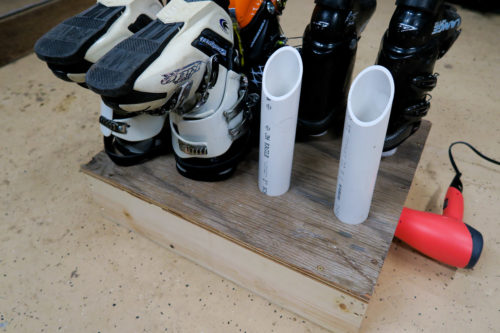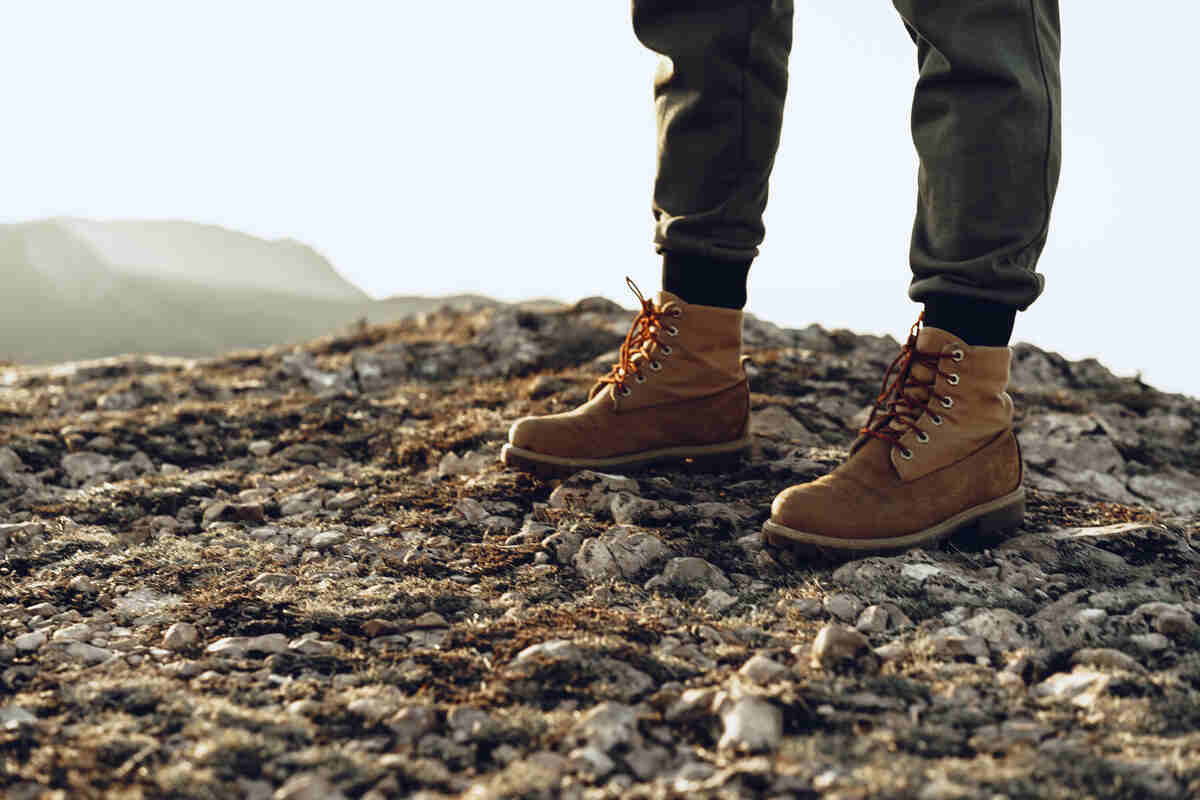Are your hunting boots soaked from a day in the wilderness? Learning how to dry hunting boots effectively can be crucial for keeping them in top condition and ready for your next adventure.
Whether caught in a downpour or trudging through marshy terrain, knowing the proper methods to dry your boots can help maintain their quality and ensure your comfort on future hunts.
Explore simple yet effective methods to dry your hunting boots and prepare them for your next outdoor adventure.
Maintaining Footwear
The durability, comfort, and performance of hiking boots depend on the materials used in their construction.
Leather boots, renowned for durability, need regular maintenance. Conversely, synthetic materials provide breathability and lightweight designs but may lack durability in rough conditions.
When choosing the suitable material for your boots, it’s crucial to think about how you’ll be using them and the environments you’ll encounter.
Regardless of the material, proper care and maintenance can significantly prolong the lifespan of your boots.
Why is Proper Boot Drying Important?
Moisture, especially when in excess, poses a threat to the integrity and performance of your boots. In humid conditions, wet work boots (or any wet footwear) are susceptible to developing mold, mildew, and unpleasant odors if not adequately dried.
Extended exposure to moisture can result in leather boots cracking or warping and foster bacterial growth, potentially causing foot discomfort or harm. Thoroughly drying your shoes is crucial to maintain their quality and extend their lifespan.
Individuals who frequently wear work boots should prioritize learning proper drying techniques, as neglecting this aspect can impact foot health and lead to significant issues.
Wet boots increase the likelihood of blisters, infections, and fungal growth, all contributing to discomfort and hindering mobility.
Best Ways to Dry Hunting Boots Fast
Boot Dryer

A boot dryer operates on a simple principle, utilizing gentle heat and airflow to eliminate moisture from the interior and exterior of boots, facilitating quicker drying. These dryers typically feature designated dry ports where boots are hung to dry efficiently.
Before using a boot dryer, it’s advisable to:
- Conduct basic boot cleaning to remove any debris.
- Familiarize yourself with the user manual to prevent potential damage to the materials.
- It’s important to note that inexpensive boots without proper stitching may be sensitive to higher temperatures, potentially causing the adhesive to melt. Therefore, it’s essential to separate delicate footwear from those more resilient to varying conditions.
Consider Using Newspaper for Boot Drying
Newspaper is a readily available and effective absorbent material to expedite boot drying.
- Fill wet boots with crumpled newspaper, ensuring the entire boot is filled.
- Place the boots outdoors overnight, preferably under a clear sky (avoid if raining). Check the dampness periodically and replace it with fresh, dry newspaper.
- Using other absorbent materials, such as alternative paper, can also aid in faster footwear drying.
Use Dry Grains
Uncooked grains like rice or cat litter can be effective moisture absorbers for your boots. Here’s a simple method to utilize them:
Fill socks with dry grains, tie them tightly, and place them inside the boots. Leave them for several hours or overnight to absorb moisture. Remove socks, shake out excess grains, and let boots air dry completely.
Using either grains or newspaper for moisture absorption still necessitates air drying, albeit it accelerates the process.
Some individuals combine the grain technique with other methods for optimal results, although methods such as using ovens for drying are not recommended due to potential damage to the footwear.
Remove Insole and Lace
Utilizing grains to fill the laces or employing the newspaper or paper towel method can effectively absorb a significant portion of shoe moisture.
You may opt for an absorbent towel and have extra towels on hand to swap them out as needed; for footwear made of materials with inherent absorption properties, such as leather boots, a sustainable approach to drying would involve combining techniques.
Remove excess moisture with the towel, then fill the boots with grains. Additionally, eliminating insoles and laces from wet boots enhances airflow, expediting drying.
Tips for Drying Specific Types of Boots
Different types of boots may require specific care when it comes to drying. Here are tailored tips for drying various kinds of boots:
Leather Boots
Exercise caution to prevent damage during drying. After drying, apply a leather conditioner to prevent cracking and restore moisture.
Ski Boots
Optimal method: air dry them with liners and insoles removed for faster drying.
Hard-Shelled Ski Boots
Designed to withstand snow or salt exposure during winter. Wipe off dirt with water and allow them to air dry for extended usability.
Work Boots
Dirty work boots, particularly those used in wet or muddy conditions, are prone to odors. Keeping an emergency pair of boots handy can help maintain foot health. Utilize a rough boot brush to remove dirt, facilitating more effortless movement.
Proper Storage
Store boots in a cool, dark place to air dry. Regularly clean off dirt or salt with a boot brush to prolong their lifespan.
How to Dry Wet Hunting Boots?
1. Assessment
Evaluate the wetness of your boots. Are they dripping wet? Noticeably heavier? Can you wring out the tongue? Does the leather feel limp? Is the footbed squishy? These seemingly odd questions are crucial for determining the extent of moisture.
2. Drying Method
- Avoid direct heat sources like fires or ovens, as they can cause unexpected damage to your boots.
- Opt for one of the following drying methods:
- Stuff the boots with dryer sheets and let them sit near an open window or in front of an air conditioner.
- Use a boot dryer rack to facilitate drying.
3. Air Dry
Air drying suits thin or inexpensive boots that can withstand being left to dry independently. Fill both boots to the brim with either dryer sheets or newspaper to absorb moisture. Dryer sheets can also leave a fresh scent. Leave the boots to dry for at least two days to ensure thorough drying. Shorter drying times may not entirely remove all moisture, potentially leading to discomfort while wearing them.
4. Boot Dryer
Choose a highly-rated automatic shoe drying rack from platforms like Amazon to ensure effectiveness and reliability. The instructions for most models are straightforward: slide the boots onto the shaft and activate the dry cycle. Remove the shoes once they’re dry. This method offers the quickest drying time for wet boots.
5. Towel Dry
Blotting wet boots with a towel is effective for materials like mesh, canvas, or suede, but it’s not recommended for leather boots. Use an absorbent towel to press down on the surface, absorbing excess water. Repeat the process until the boots are dry.
6. Cat Litter
Like the “rice trick” for drying wet phones, cat litter or rice can also dry boots. Completely submerge the boots in loose material, such as rice or cat litter. Leave them overnight and check on them the following day. Repeat the process as needed until the boots are dry. Both rice and cat litter are affordable and readily available options for drying boots.
FAQs
1. Why is proper boot drying important?
Proper boot drying prevents mold, mildew, and odors, maintaining boot integrity and performance. It also helps avoid discomfort and foot health issues like blisters and fungal growth.
2. What are the best ways to dry hunting boots fast?
Effective methods include
- Using a boot dryer.
- Stuffing boots with newspaper.
- Utilizing dry grains like rice or cat litter.
- Removing insoles and laces to enhance airflow.
3. Can I use a boot dryer for all types of boots?
Boot dryers can be used for most boots, but caution should be exercised with delicate footwear or boots made of materials sensitive to high temperatures.
4. Are there specific drying techniques for different types of boots?
Yes, different types of boots may require tailored drying techniques. For example, leather boots should be dried cautiously to prevent damage, while ski boots may need air drying with liners and insoles removed.
5. What should I avoid when drying wet hunting boots?
Avoid direct heat sources like fires or ovens, as they can damage the boots. Also, avoid using methods involving excessive heat or pressure, as they can deform or degrade the materials.
6. How long does it take to dry wet hunting boots using different methods?
Drying times vary depending on the method used, the extent of moisture, and the type of boots. Boot dryers typically offer the quickest drying time, while air drying may take a few days for thorough drying.
Conclusion
Mastering the art of drying hunting boots effectively is indispensable for maintaining their quality and ensuring optimal performance on future outdoor ventures.
From utilizing specialized boot dryers to employing simple yet ingenious methods like newspaper stuffing or grain absorption, a range of techniques is suited to different boot types and moisture levels.
By prioritizing proper drying practices, outdoor enthusiasts can prolong the lifespan of their footwear, mitigate the risk of moisture-related issues, and ultimately enhance their comfort and safety during wilderness pursuits.

